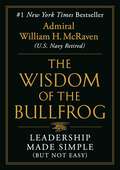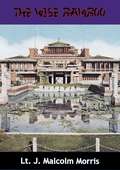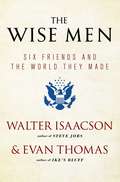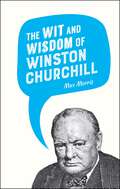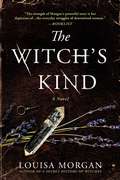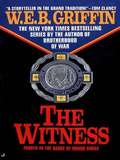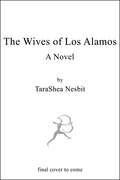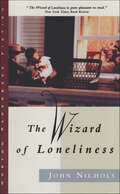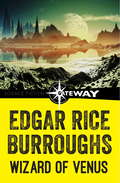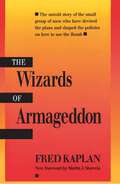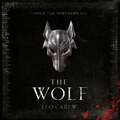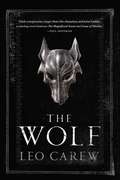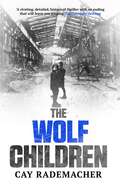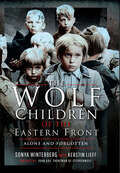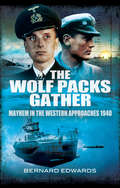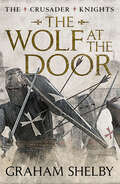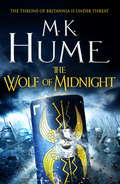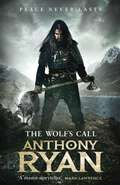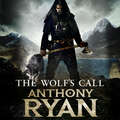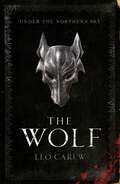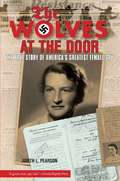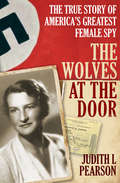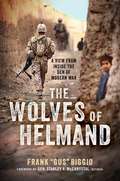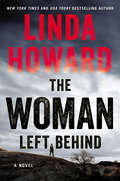- Table View
- List View
The Wisdom of the Bullfrog: Leadership Made Simple (But Not Easy)
by Admiral William H. McRavenTHE INSTANT #1 New York Times BESTSELLER From the acclaimed, bestselling author of Make Your Bed—a short, inspirational book of advice and leadership lessons that Admiral McRaven collected over his four decades as a Navy SEAL. The title &“Bullfrog&” is given to the Navy SEAL who has served the longest on active duty. Admiral McRaven was honored to receive this honor in 2011 when he took charge of the United States Special Operations Command. When McRaven retired in 2014, he had 37 years as a Navy SEAL under his belt, leading men and women at every level of the special operations community. In the ensuing four years, he served as Chancellor to the entire University of Texas System, with its 230,000 students and 100,000 faculty and health care workers. During those four decades, Admiral McRaven dealt with every conceivable leadership challenge, from commanding combat operations—including the capture of Saddam Hussein, the rescue of Captain Phillips, and the raid for Osama bin Laden. THE WISDOM OF THE BULLFROG draws on these and countless other experiences from Admiral McRaven&’s incredible life, including crisis situations, management debates, organizational transitions, and ethical dilemmas, to provide readers with the most important leadership lessons he has learned over the course of his forty years of service. Each chapter provides a Make Your Bed-like parable, rich with insights like those featured in his bestselling memoir, Sea Stories, about the specific leadership traits required to be at the top of your game, including: Who Dares, Wins Run to the Sound of the Guns No Plan Survives First Contact with the Enemy THE WISDOM OF THE BULLFROG is Admiral McRaven&’s clear-eyed treatise on the leadership qualities that separate the good from the truly great.
The Wise Bamboo
by Lt. J. Malcolm MorrisWhen Lieutenant Morris arrived in Japan in 1945 he was not seeking the position of manager of the Imperial Hotel in Tokyo. He came simply to run it as a billet for senior officers of the Allied Occupation Forces. But hotels, it seemed, were already in his blood, and when he was demobilized in 1946 he decided "to stay around just to see what could possibly happen next."The Wise Bamboo is his account of what did happen.
The Wise Men: Six Friends and the World They Made
by Evan Thomas Walter IsaacsonWith a new introduction by the authors, this is the classic account of the American statesmen who rebuilt the world after the catastrophe of World War II.A captivating blend of personal biography and public drama, The Wise Men introduces six close friends who shaped the role their country would play in the dangerous years following World War II. They were the original best and brightest, whose towering intellects, outsize personalities, and dramatic actions would bring order to the postwar chaos and leave a legacy that dominates American policy to this day. The Wise Men shares the stories of Averell Harriman, the freewheeling diplomat and Roosevelt&’s special envoy to Churchill and Stalin; Dean Acheson, the secretary of state who was more responsible for the Truman Doctrine than Truman and for the Marshall Plan than General Marshall; George Kennan, self-cast outsider and intellectual darling of the Washington elite; Robert Lovett, assistant secretary of war, undersecretary of state, and secretary of defense throughout the formative years of the Cold War; John McCloy, one of the nation&’s most influential private citizens; and Charles Bohlen, adroit diplomat and ambassador to the Soviet Union.
The Wit and Wisdom of Winston Churchill
by Max Morris'The pessimist sees difficulty in every opportunity. The optimist sees the opportunity in every difficulty.'This inspiring collection gathers together Winston Churchill’s wisest and wittiest quotations.The Wit and Wisdom of Winston Churchill showcases his finest hour and is sure to delight all admirers of this great British statesman’s rousing and compelling way with words.
The Witch's Kind: A Novel
by Louisa MorganAn absorbing tale of love, sacrifice, family ties, and magic, set in the Pacific Northwest in the aftermath of World War II, by the author of A Secret History of Witches Barrie Anne Blythe and her aunt Charlotte have always known that the other residents of their small coastal community find them peculiar -- two women living alone on the outskirts of town. It is the price of concealing their strange and dangerous family secret. But two events threaten to upend their lives forever. The first is the arrival of a mysterious abandoned baby with a hint of power like their own. The second is the sudden reappearance of Barrie Anne's long-lost husband -- who is not quite the man she thought she married. Together, Barrie Anne and Charlotte must decide how far they are willing to go to protect themselves -- and the child they think of as their own -- from suspicious neighbors, the government, and even their own family...For more from Louisa Morgan, check out A Secret History of Witches.
The Witness (Badge Of Honor #4)
by W.E.B. GriffinThe robbery ended in murder, the killers claimed to be terrorists, and the only cooperative witness feared for his life. Police officer Matt Payne knew the dangers of his profession--but never thought that he himself would be the one who needed protection. . . In BADGE OF HONOR, W. E. B. Griffin reveals the explosive world of law enforcement with the same power and authenticity that made his BROTHERHOOD OF WAR and THE CORPS series nationwide bestsellers. .
The Wives of Los Alamos: A Novel
by Tarashea NesbitThey arrived in New Mexico ready for adventure, or at least resigned to it. But hope quickly turned to hardship as they were forced to adapt to a rugged military town where everything was a secret--including what their husbands were doing at the lab. Though they were strangers, they joined together--adapting to a landscape as fierce as it was absorbing, full of the banalities of everyday life and the drama of scientific discovery. <p><p> While the bomb was being invented, babies were born, friendships were forged, children grew up, and Los Alamos gradually transformed into a real community: one that was strained by the words they couldn’t say out loud or in letters, and by the freedom they didn’t have. But the end of the war would bring even bigger challenges, as the scientists and their families struggled with the burden of their contribution to the most destructive force in the history of mankind. <p> The Wives of Los Alamos is a testament to a remarkable group of real-life women and an exploration of a crucial, largely unconsidered aspect of one of the most monumental research projects in modern history.
The Wives: A Memoir
by Simone Gorrindo&“[Simone] Gorrindo&’s prose is inviting and fluid, and her storytelling is intimate and vivid...[an] engaging, evocative memoir.&” —The New York Times Book Review &“A hopeful, unifying memoir.&” —People This profoundly intimate memoir about marriage, friendship, and the power of human connection tells the story of one woman&’s experience of joining a community of army wives after leaving her New York City job.When her new husband joins an elite Army unit, Simone Gorrindo is uprooted from New York City and dropped into Columbus, Georgia. With her husband frequently deployed, Simone is left to find her place in this new world, alone—until she meets the wives. Gorrindo gives us an intimate look into the inner lives of a remarkable group of women and a tender, unflinching portrait of a marriage. A love story, an unforgettable coming-of-age tale, and a bracing tour of the intractable divisions that plague our country today, The Wives offers a rare and powerful gift: a hopeful stitch in the fabric of a torn America.
The Wizard of Loneliness
by John Nichols"John Nichols has remarkable insight into life's crazy blend of comedy and tragedy. . . . Pure pleasure to read." —New York Times Book Review It's World War II, and young Wendall Oler has been sent to stay will his father's family in rural Stebbinsville, Vermont. Using this opportunity to act out his resentment for the death of his mother and his father's leaving to fight in the war he does all he can to tyrannize his new family. Yet, thrown into the warmth of this country family, Wendall finds his resolve softening.
The Wizard of Venus
by Edgar Rice BurroughsThe fifth and final adventure of Carson Napier among the exotic peoples and beasts of Amtor is Burroughs' THE WIZARD OF VENUS. Sequel to his fabulous four Venus novels, it is an adventure not to be missed as Napier encounters a new kind of science and a new master of alien deviltry.
The Wizards of Armageddon
by Martin J. Sherwin Fred KaplanThis is the untold story of the small group of men who have devised the plans and shaped the policies on how to use the Bomb. The book (first published in 1983) explores the secret world of these strategists of the nuclear age and brings to light a chapter in American political and military history never before revealed.
The Wolf (The UNDER THE NORTHERN SKY Series, Book 1)
by Leo CarewLeo Carew's debut novel The Wolf, the first book in the Under the Northern Sky series, is a masterpiece in epic historical fantasy - a new voice to rival David Gemmell or George RR Martin. A great war has come to the land under the Northern Sky.Beyond the Black River, among the forests and mountains of the north, lives an ancient race of people. Their lives are measured in centuries, not decades; they revel in wilderness and resilience, and they scorn wealth and comfort. By contrast, those in the south live in the moment, their lives more fleeting. They crave wealth and power, their ambition is limitless, and their cunning unmatched.When the armies of the south flood across the Black River, the fragile peace between the two races is shattered. On a lightning-struck battlefield, the two sides will fight - for their people, for their land, for their very survival. Two sides. One victor. The Wolf is a thrilling, savagely visceral, politically nuanced and unexpectedly wry exploration of power and identity - and how far one will go to defend them.(P)2018 Headline Publishing Group Ltd
The Wolf (Under the Northern Sky #1)
by Leo CarewA young lord faces off against an ingenious general in an epic fantasy that's "twisty in its political maneuverings, gritty in its battle descriptions, and rich with a sense of heroism and glory." (Publishers Weekly)Beyond the Black River, among the forests and mountains of the north, lives an ancient race of people. Their lives are measured in centuries, not decades; they revel in wilderness and resilience, and they scorn wealth and comfort.By contrast, those in the south live in the moment, their lives more fleeting. They crave wealth and power; their ambition is limitless, and their cunning unmatched.When the armies of the south flood across the Black river, the fragile peace between the two races is shattered. On a lightning-struck battlefield, the two sides will fight -- for their people, for their land, for their very survival.
The Wolf Children (Frank Stave Investigations #2)
by Cay RademacherBook Two of the Inspector Frank Stave Investigations, a German detective trilogy set in post-WWII Hamburg. More than 150,000 copies sold.Hamburg, 1948It is a year of extremes. After a bitterly cold winter of starvation, the bombed city groans under excruciating heat. And Chief Inspector Frank Stave is confronted with a new case.In the ruins of a shipyard, the corpse of a boy is found and Stave's hunt for the killer leads him into the world of "wolf children" - orphaned children who have fled from the Occupied Eastern Territories and are now united in gangs.When two more bodies are discovered Stave is under even increasing pressure as he struggles to keep his personal life together too . . .Praise for the Frank Stave Investigations'Undoubtedly the most powerful work of crime fiction I have read this year' Independent'Vivid and harrowing' Sunday Times'Police procedural, romance, thriller The Murderer in Ruins has a bit of everything and it's one hell of a read.' BücherReader reviews for The Wolf Children'This is writing at its best. A well crafted murder hunt set in haunting landscape of post war Hamburg. Cay Rademacher has again written a book that will stay in my memory for a long time' *****'Another atmospheric, well-researched novel from Rademacher. He has a remarkable ability to bring characters to life in the space of a paragraph' *****'A bit of a goldilocks book. Not too heavy, not too light, not too long, not too short. Just about right' *****Translated from the German by Peter Millar
The Wolf Children of the Eastern Front
by Sonya Winterberg Kerstin LieffIf this doesn’t move you, I suggest you check your pulse.' –John Kay, frontman of Steppenwolf (born in East Prussia in 1944) Told by the children who survived, these stories could well be the last eyewitness report of the aftermath of the Second World War. As the land where they once lived was integrated into the Eastern Bloc, their accounts remained hushed until after the Iron Curtain fell. Now, in The Wolf Children of the Eastern Front, they break their silence. During the bitter winter months of 1944-45, hundreds of thousands of Germans fled East Prussia from an advancing Red Army. With sometimes only minutes’ notice, families escaped in horse-drawn carriages, or they simply ran on foot. In desperation, mothers threw babies onto handcarts, pushing ahead through snowstorms and freezing temperatures. Exhausted, horses broke down, left to die in roadside ditches. Pounding artillery filled the air. In the ensuing chaos, 20,000 children lost their families – to the mayhem, to starvation, epidemics or gunfire. Even the youngest suddenly found themselves alone in the world, needing to forage for food and find shelter. They hid in bullet-riddled barns and wandered from house to house, begging for help. While many died, there are the few that managed to survive. Their experiences are unimaginable: toes frozen off, endless hunger, rape, physical abuse. Those considered lucky were eventually taken in, even lovingly cared for, primarily by Lithuanian farmers, but nearly to the last of them, they grew into adulthood illiterate and poverty-stricken. Yet a surprising truth lives within nearly every one of these victims – an overwhelming sense of hope and forgiveness. They are the Wolf Children.
The Wolf Packs Gather: Mayhem in the Western Approaches 1940
by Bernard EdwardsThe capture by the German surface raider Atlantis of the British steamer City of Baghdads secret code books in July 1940 enabled the Nazis to de-cypher Admiralty convoy plans with deadly effect. This book describes the resulting appalling Allied losses suffered by four convoys during the Autumn of 1940. Admiral Donetz, aware of the movements of the Allied convoys, marshaled as many of his U-boats as possible. The first convoy, SC2, consisting of 53 merchant men was attacked in early September by four U-boats. Due to poor weather only five ships were lost. Shortly after HX72, with 41 ships, sailing from Nova Scotia, lost eleven ships to five Type VIIC U-boats. Top Aces Otto Kretschremer and Joachim Schepke, who penetrated inside the columns, accounted for nine. No less than nine U-boats attacked SC7 in October 1940. Of 35 merchant men a staggering 20 were lost. HX79 also fared terribly despite being a fast convoy with ten escorts, losing twelve ships. In total forty-eight merchant men were sunk and seven more damaged without any U-boat losses at all. The Wolf Packs Gather is an authoritative account of the darkest hours of the War in the Atlantic. It describes not only the German tactics but the inadequacies of what few escorts there were and the heartbreaking loss of defenseless life.
The Wolf at the Door (The Crusader Knights Cycle)
by Graham ShelbyThe country needs a strong king in this thrilling historical adventure of The Crusader KnightsAs Richard Coeur de Lion’s empire crumbles and castle after castle falls to the French, there is one man who can save England – but King John will not send for him.England is in disarray: William Marshal, the King’s battle-scarred champion is left to dally at home with his new wife. King John himself is newly wed to Isabell of Angoulême, who will vie to outdo her husband with cruelty and spite. Called Lackland by some, as a measure of his wealth, Soft-sword by others, as the measure of his military prowess, King John is reckoned a poor choice to succeed his heroic brother, Richard the Lionhearted. But his terrible cunning can strike fear into the heart of the most courageous of men…The fifth fascinating instalment of The Crusader Knights Cycle is perfect for fans of David Gilman and Bernard Cornwell. ‘Vivid visual moments and all the technology of medieval warfare’ Observer
The Wolf of Midnight (Tintagel Book III): An epic tale of Arthurian Legend
by M. K. HumeThe throne of Britannia is under threat...This gripping conclusion to M.K. Hume's epic Arthurian series takes readers on a journey of bravery and brutality within tribal Britain and throughout the Roman Empire: a world of bloody battlefields, evil machinations, honour, ambition and greed. Not to be missed by fans of George R.R. Martin and Bernard Cornwell.'Hume brings the bloody, violent, conniving world vividly to life...will appeal to those who thrill to Game of Thrones and other tales of intersecting, ever-warring, noble lineages' - Kirkus ReviewWhen Flavius Constantine, the High King of Britannia, is killed and his eldest son and heir Constans, is murdered, the path lies clear for Vortigern to seize the throne.Only Queen Severa's young sons, Ambrosius and Uther, stand in the way of Vortigern's evil plan. Sensing the boys are in mortal danger, Constantine's loyal Decurion, Paulus, and Severa's beloved brother, Pridenow, smuggle the infants into exile.Meanwhile, Queen Severa is forced to endure Vortigern's relentless brutality in her desperate bid to hold together the fractured throne. But she is no match for the Wolf of Midnight and it is only in the fullness of time that her sons will return to Britannia to claim the throne and fulfil their destiny...What readers are saying about the Tintagel trilogy: 'What the author certainly has managed to do, is give us an insight into the lives and habits of the Celts in Roman Britain in her own fascinating and thrilling fashion''I love the way [M.K. Hume] breathes life into the characters, giving each individual traits that in the whole make them stronger whilst their own personal foibles allow a vulnerability''M.K. Hume is one of my favourite authors - a fantastic series'
The Wolf's Call: Book One of Raven's Blade (Raven's Blade)
by Anthony Ryan'Robin Hobb meets Joe Abercrombie . . . This is fantasy with a totally legendary feel' Fantasy Book Review'The Wolf's Call is everything a fantasy fan could ever wish for' Booknest'Anthony Ryan's best work since the release of his incredible debut . . . fantastic storytelling' Novel Notions'An immensely satisfying, top-notch adventure fantasy' Kirkus Vaelin Al Sorna is a living legend. It was his leadership that overthrew empires and his sacrifice that saved the Unified Realm from destruction. Now he lives a quiet life, his days of warfare behind him.Yet whispers have spread across the sea of an army called the Steel Horde, led by a man who thinks himself a god. When Vaelin learns that Sherin, the woman he lost long ago, has fallen into the Horde's grasp, he resolves to confront this powerful new threat.To this end, he travels to the realms of the Merchant Kings - a strange land ruled by honour and intrigue. And as the drums of war echo across kingdoms riven by conflict, Vaelin learns that there are some battles even he cannot hope to win.The Wolf's Call is the start of an action-packed epic fantasy series from Anthony Ryan, a master storyteller who has taken the fantasy world by storm.Books by Anthony Ryan:Raven's Shadow Blood SongTower LordQueen of FireRaven's BladeThe Wolf's Call The Black Song Draconis Memoria The Waking FireThe Legion of FlameThe Empire of AshesThe Covenant of SteelThe Pariah
The Wolf's Call: Book One of Raven's Blade (Raven's Blade)
by Anthony Ryan'Robin Hobb meets Joe Abercrombie . . . This is fantasy with a totally legendary feel' Fantasy Book Review'The Wolf's Call is everything a fantasy fan could ever wish for' Booknest'Anthony Ryan's best work since the release of his incredible debut . . . fantastic storytelling' Novel Notions'An immensely satisfying, top-notch adventure fantasy' Kirkus Vaelin Al Sorna is a living legend. It was his leadership that overthrew empires and his sacrifice that saved the Unified Realm from destruction. Now he lives a quiet life, his days of warfare behind him.Yet whispers have spread across the sea of an army called the Steel Horde, led by a man who thinks himself a god. When Vaelin learns that Sherin, the woman he lost long ago, has fallen into the Horde's grasp, he resolves to confront this powerful new threat.To this end, he travels to the realms of the Merchant Kings - a strange land ruled by honour and intrigue. And as the drums of war echo across kingdoms riven by conflict, Vaelin learns that there are some battles even he cannot hope to win.The Wolf's Call is the start of an action-packed epic fantasy series from Anthony Ryan, a master storyteller who has taken the fantasy world by storm.Books by Anthony Ryan:Raven's Shadow Blood SongTower LordQueen of FireRaven's BladeThe Wolf's Call The Black Song (coming July 2020)Draconis Memoria The Waking FireThe Legion of FlameThe Empire of Ashes
The Wolf: A sweeping epic fantasy (Under the Northern Sky)
by Leo CarewA MASTERPIECE IN EPIC HISTORICAL FANTASY - A NEW VOICE TO RIVAL DAVID GEMMELL OR GEORGE RR MARTIN A great war has come to the land under the Northern Sky.Beyond the Black River, among the forests and mountains of the north, lives an ancient race of people. Their lives are measured in centuries, not decades; they revel in wilderness and resilience, and they scorn wealth and comfort. By contrast, those in the south live in the moment, their lives more fleeting. They crave wealth and power, their ambition is limitless, and their cunning unmatched.When the armies of the south flood across the Black River, the fragile peace between the two races is shattered. On a lightning-struck battlefield, the two sides will fight - for their people, for their land, for their very survival. Two sides. One victor.The Wolf is a thrilling, savagely visceral, politically nuanced and unexpectedly wry exploration of power and identity - and how far one will go to defend them.WHAT REVIEWERS ARE ALREADY SAYING ABOUT CAREW'S BREATHTAKING FANTASY EPIC:'The next George RR Martin' - Mail on Sunday'Imagine Game of Thrones rewritten by John le Carré . . . A marvellously accomplished debut' - Guardian'Full of dark conspiracies, larger-than-life characters, and tense battles' - Paul Hoffman, author of The Left Hand of God
The Wolves At The Door: The True Story Of America's Greatest Female Spy (Lyons Press Series)
by Judith PearsonVirginia Hall left her comfortable Baltimore roots in 1931 to follow a dream of becoming a Foreign Service Officer. After watching Hitler roll over Poland and France, she enlisted to work for the British Special Operations Executive (SOE), a secret espionage and sabotage organization. She was soon deployed to occupied France where, if captured, imprisonment and torture at the hands of the Gestapo was all but assured. Against such an ominous backdrop, Hall managed to locate drop zones for money and weapons, helped escaped POWs and downed Allied airmen flee to England, and secured safe houses for agents. And she did it all on one leg: Virginia Hall had lost her left leg before the war in a hunting accident. Soon, wanted posters appeared throughout France, offering a reward for her capture. By winter of 1942, Hall had to flee France via the only route possible: a hike on foot through the frozen Pyrénées Mountains into neutral Spain. Upon her return to England, the American espionage organization, the Office of Special Services, recruited her and sent her back to France disguised as an old peasant woman. While there, she was responsible for killing 150 German soldiers and capturing 500 others. Sabotaging communications and transportation links and directing resistance activities, her work helped change the course of the war. This is the true story of Virginia Hall.
The Wolves at the Door: The True Story of America's Greatest Female Spy (Lyons Press Ser.)
by Judith L. PearsonThis WWII espionage biography brings "one of America's greatest spies back to life&” in a &“story of derring-do and white knuckles suspense&” (Patrick O'Donnell, author of Operatives, Spies, and Saboteurs) Virginia Hall left her comfortable Baltimore roots in 1931 with dreams of becoming a Foreign Service Officer, but her gender—and her wooden leg—kept her from pursuing politics. As Hitler advanced across Europe, she put her gift for languages to use with the British Special Operations Executive, a secret espionage organization. She was soon deployed to occupied France where she located drop zones, helped prisoners of war flee to England, and secured safe houses for agents. Soon, wanted posters appeared throughout France, offering a reward for Hall&’s capture. By 1942, Hall had to flee France via the only route possible: an arduous hike on foot through the frozen Pyrénées Mountains. Upon her return to England, the American espionage organization, the Office of Special Services, recruited her and sent her back to France disguised as an old peasant woman. While there, she was responsible for killing 150 German soldiers and capturing 500 others. Sabotaging communications and directing resistance activities, her brave work helped change the course of the war.
The Wolves of Helmand: A View from Inside the Den of Modern War
by Frank "Gus" BiggioAt turns poignant, funny, philosophical, and raw—but always real—The Wolves of Helmand is both a heartfelt homage to the Marine brotherhood with whom Biggio served and an expression of respect and love for the people of Afghanistan who ultimately trusted, shared, and appreciated their purpose.Ten years after serving his country as a U.S. Marine, Captain Frank &“Gus&” Biggio signed up once again because he missed the brotherhood of the military. Leaving behind his budding law career, his young wife, and newborn son, he was deployed to Helmand Province—the most violent region in war-torn Afghanistan—for reasons few would likely understand before reading this book. Riven by conflict and occupation for centuries because of its strategic location, the region he landed in was, at that time, a hotbed of Taliban insurgency. As a participant in the landmark U.S.-led Operation Khanjar, Biggio and his fellow Marines were executing a new-era military strategy. Focused largely on empowerment of the local population, the offensive began with a troop surge designed to thwart the Taliban, but was more importantly followed by the restoration of the local government and real-time capacity building among the withdrawn and destitute Afghan people. The Wolves of Helmand is unlike other war memoirs. It takes us less into the action—though there is that too—and more into the quiet places of today&’s war zones. Yes, you&’ll read of our Marines&’ stealth arrival in a single night, our advanced weaponry, and our pop-up industrial village command centers. You&’ll read, as well, about the ambushed patrols and the carnage of IEDs. But you will also read of the persistence, humility, ruggedness, loneliness, tedium, diplomacy, and humanity of our Marines&’ jobs there, which more than anything else reveals the magnitude of even the smallest victories. Completed years after the author&’s return from his mission, The Wolves of Helmand is most of all a decade-long self-examination of a warrior&’s heart, conscience, and memory. Whether intended or not, Biggio&’s deep reflections and innate honesty answer every question you&’ve ever wanted to ask about life and death in war—and even questions you probably never thought to ask. What calls a warrior to duty? What makes, sustains, plagues, and even breaks a warrior? These are bigger questions than the ones impolite society pokes around when a veteran returns home—Did you kill anyone? Did you have to go? Why would you fight for another country? Why were we even there? Yet the answers to those queries are here, too, in this thoughtful memoir that will make you think about war, family, love, and loss.
The Woman Left Behind: A Novel
by Linda Howard<P>Jina Modell works in Communications for a paramilitary organization, and she really likes it. She likes the money, she likes the coolness factor—and it was very cool, even for Washington, DC. She liked being able to kick terrorist butts without ever leaving the climate-controlled comfort of the control room. But when Jina displays a really high aptitude for spatial awareness and action, she’s reassigned to work as an on-site drone operator in the field with one of the GO-teams, an elite paramilitary unit. <P>The only problem is she isn’t particularly athletic, to put it mildly, and in order to be fit for the field, she has to learn how to run and swim for miles, jump out of a plane, shoot a gun...or else be out of a job. Team leader Levi, call sign Ace, doesn’t have much confidence in Jina--who he dubbed Babe as soon as he heard her raspy, sexy voice--making it through the rigors of training. The last thing he needs is some tech geek holding them back from completing a dangerous, covert operation. <P>In the following months, however, no one is more surprised than he when Babe, who hates to sweat, begins to thrive in her new environment, displaying a grit and courage that wins her the admiration of her hardened, battle-worn teammates. What’s even more surprising is that the usually very disciplined GO-team leader can’t stop thinking about kissing her smart, stubborn mouth…or the building chemistry and tension between them. <P>Meanwhile, a powerful Congresswoman is working behind the scenes to destroy the GO-teams, and a trap is set to ambush Levi’s squad in Syria. While the rest of the operatives set off on their mission, Jina remains at the base to control the surveillance drone, when the base is suddenly attacked with explosives. <P>Thought dead by her comrades, Jina escapes to the desert where, brutally tested beyond measure, she has to figure out how to stay undetected by the enemy and make it to her crew in time before they’re exfiltrated out of the country. But Levi never leaves a soldier behind, especially the brave woman he’s fallen for. He’s bringing back the woman they left behind, dead or alive. <P><b> A New York Times Bestseller</b>
